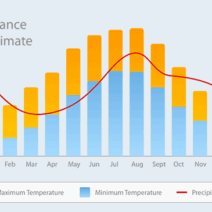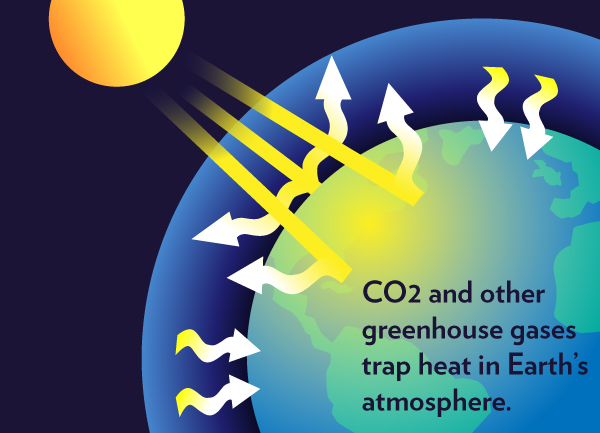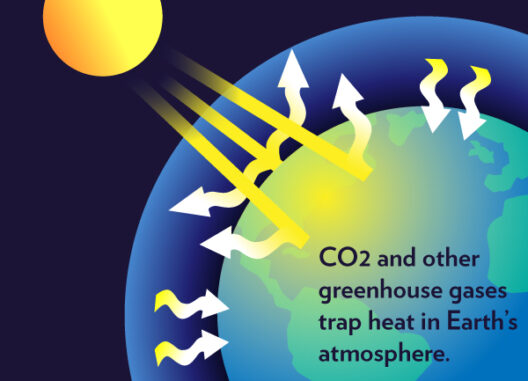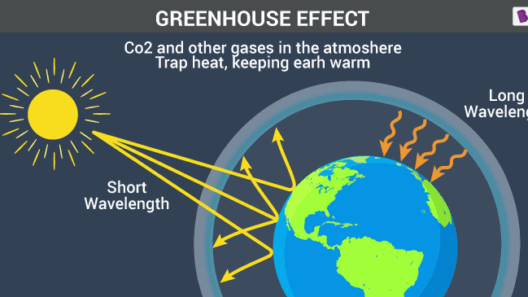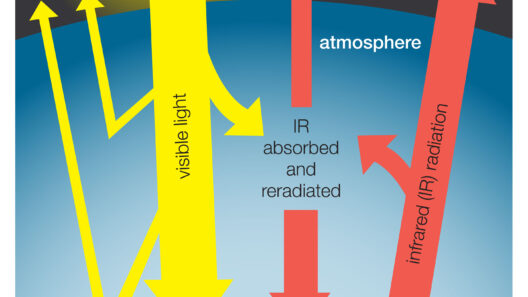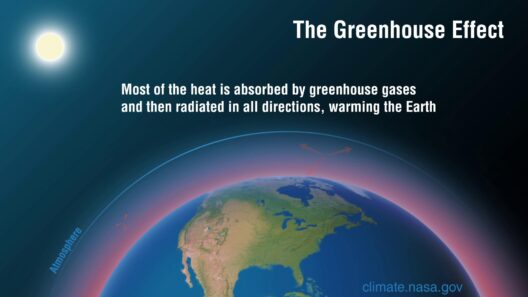The Greenhouse Effect is a fundamental mechanism that sustains life on Earth, yet it is often mischaracterized and misunderstood. This phenomenon, a byproduct of certain gases in our atmosphere, plays a pivotal role in regulating the planet’s temperature. To appreciate its significance, it is crucial to delve into the nature of greenhouse gases and their impact on Earth’s energy balance.
Greenhouse gases (GHGs) such as carbon dioxide (CO2), methane (CH4), nitrous oxide (N2O), and water vapor form a protective layer in the atmosphere. They allow sunlight to enter but prevent some of the heat that the Earth radiates from escaping back into space. This natural process is vital for maintaining a habitable climate. Without the greenhouse effect, the average surface temperature of the Earth would plummet, making it inhospitable for most forms of life.
However, anthropogenic activities have skewed this delicate balance. The burning of fossil fuels, deforestation, and industrial processes have resulted in increased concentrations of greenhouse gases, exacerbating the greenhouse effect and leading to global warming. The intricate relationship between these gases and the Earth’s climate necessitates a thorough exploration of their roles.
The mechanics of the greenhouse effect are best understood when one considers the flow of solar energy. The Sun emits energy in the form of radiation, which reaches the Earth. Some of this energy is absorbed by the planet’s surface, warming it, while the rest is reflected back into space. The warmed Earth emits energy back as infrared radiation. Herein lies the importance of greenhouse gases: they absorb and re-emit some of this infrared radiation, trapping heat in the atmosphere.
This trapped heat is essential for maintaining the planet’s temperature range. Without it, temperatures would average around -18 degrees Celsius (0 degrees Fahrenheit), whereas the current average is around 15 degrees Celsius (59 degrees Fahrenheit). Hence, greenhouse gases are imperative to the planet’s energy balance.
In examining the specific contributions of various greenhouse gases, it is important to note their differing effects, longevity in the atmosphere, and global warming potential (GWP).
Carbon Dioxide: The Specter of Sustainability
Often referred to as the primary greenhouse gas, carbon dioxide is a key player in the greenhouse effect. Produced by burning fossil fuels, deforestation, and various industrial processes, CO2 is responsible for approximately three-quarters of emissions from human activities. Its prevalence in our atmosphere results in significant heat retention. While its lifespan can extend for hundreds to thousands of years, the good news is that natural processes, such as photosynthesis, can mitigate its levels over time.
Methane: A Potent Global Warming Agent
Methane, though present in smaller quantities compared to CO2, is vastly more effective at trapping heat—approximately 25 times more for a century following its release. This makes it a potent contributor to climate change in the short term. Methane emissions arise from agriculture (especially enteric fermentation in livestock), landfills, and natural gas extraction. The consequences of methane release are alarming due to its rapid intensification of the greenhouse effect. As such, addressing methane emissions is paramount in climate strategy discussions.
Nitrous Oxide: The Overlooked Culprit
Nitrous oxide has a far-reaching impact on the greenhouse effect, albeit in smaller concentrations relative to CO2 and methane. This gas, predominantly released from agricultural activities and industrial processes, is about 298 times more effective than CO2 at trapping heat over a century. Its long residence time in the atmosphere—over a century—compounds its potential to contribute to climate change. Furthermore, nitrous oxide also plays a role in ozone depletion, adding another layer of complication to its environmental impact.
The Balanced Energy Scale: Nature’s Equilibrium
Earth’s energy balance reflects the equilibrium between incoming solar radiation and outgoing heat. Greenhouse gases play a crucial role in maintaining this balance by ensuring that enough heat is trapped to support life while preventing excessive warming. However, human activities are tipping the scales by increasing greenhouse gas concentrations, leading to an enhanced greenhouse effect. This alteration in energy dynamics is the crux of global warming and climate change.
The consequences of disrupted energy balance are dire. Rising global temperatures result in melting ice caps, rising sea levels, extreme weather events, and detrimental impacts on biodiversity. Moreover, agricultural patterns shift, leading to food security concerns and socio-economic instability.
Solutions and Mitigation Strategies
Addressing the challenges posed by the greenhouse effect necessitates a multipronged approach. Transitioning to renewable energy sources, enhancing energy efficiency, and adopting sustainable agricultural practices are vital. Reforestation, afforestation, and wetlands restoration can also serve to sequester carbon effectively. Moreover, global cooperation through treaties such as the Paris Agreement emphasizes pledging reductions in greenhouse gas emissions and fostering technological innovations for a sustainable future.
Understanding the greenhouse effect and the role of greenhouse gases provides insights not only into climate science but also inspires meaningful action. As stewards of this planet, individuals and society must grasp the importance of promoting environmental sustainability, as the scales of the Earth’s energy balance must be restored to ensure a bright future for generations to come.

